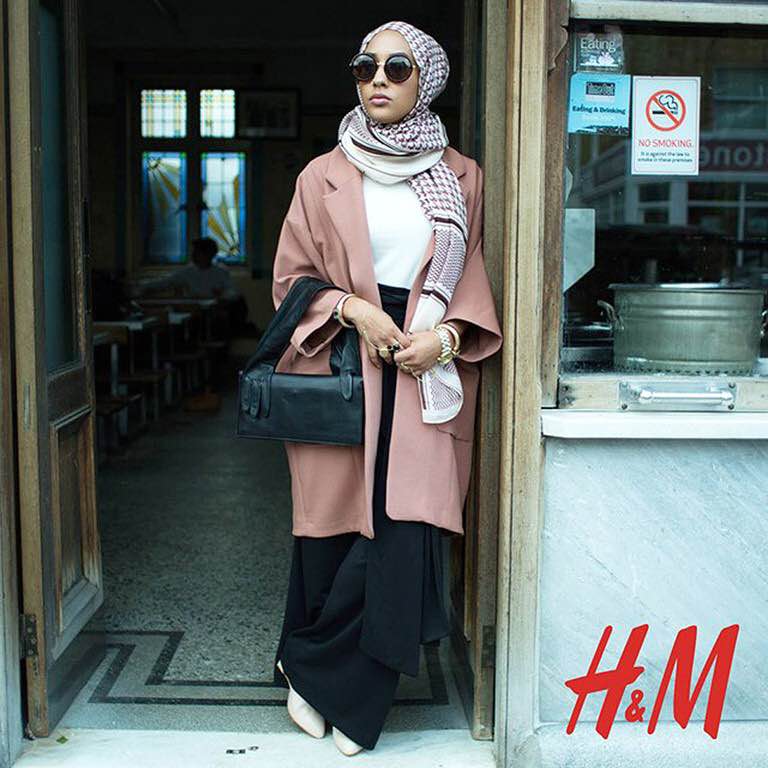Here we are in the middle of 2017, after a controversial and interesting 2016 in various sectors and life events, such as the phenomena of Hijab on the runway.
We saw the rise of Islamophobic attacks against Hijabi women as a form of terrorism in public places, busy airports and airplanes, where diverse crowds of different faiths and ethnicities mix. There was also the controversial Burkini incident in France. Although France claims to be a secular state, but since 2010 it has begun to ban the Hijab and finally imposed a law banning the Burkini (a modest swimsuit). After international outcry between opponents and critics, the law was repealed.
There was a huge moment where what is controversial had the potential to shift the demand for it, and this is what happened with the Burkini.
In the midst of these negative events, 2016 was full of changes that could be seen as very positive about the Hijab in the world of fashion and beauty. These events show more openness and acceptance of others, some even purely strove to attract a large constituency of female consumers around the world. Here we explore some of these fashion campaigns and trends that have ignited the media and public opinion.
H&M Campaign and Maria Idreesy
In 2013 the Swedish brand began an advertising campaign to recycle clothing. At the end of 2015, Mariah Idrissi, a British model originally from Morocco and Pakistan, was one of the fashion models of H&M. Her image modelling H&M fashion was widely and effectively circulated with different reactions, and she became a prominent part of promoting the advertising campaign.
The announcement concluding the campaign was the sentence “there are no limitations in the world of fashion but one: recycle your clothes”.

The Dolce and Gabbana Abaya’s Collection
The famous Italian fashion house Dolce and Gabbana launched an Abaya line to attract a very specific group of women and perhaps a purely commercial purpose to attract women in the Gulf region.
Anyhow, this is was a nice gesture from the fashion house, likening it to other fashion houses that launch Ramadan fashion lines – as the occasion is one of the most prominent in the Muslim calendar. Abaya’s in D&G’s fashion line were distinguished with rose patterns and lace fabrics committing it to the same signature of Dolce and Gabbana’s other lines. The colour palette was restricted to the statement black but in diverse fabrics, cuts and designs.
Modest Fashion Week in Istanbul
The event was the first Modest Fashion Week ever. Although it did not last for a whole week, but it was a great event for the modest fashion designers and provided an opportunity and enough space to convince fashion enthusiasts of the quality of modest designs. It also gave wide access to modest fashionistas and hijabi fashion bloggers. The venue for the fashion shows was carefully chosen at a historic train station. According to Reuters, Turkey is the largest consumer of modest fashion, so it only makes sense that it hosts the first international Modest Fashion Week of its kind.
New York fashion Week and Anniesa Hasibuan
The first hijabi fashion show in the history of the New York Fashion Week was held last September by designer Anniesa Hasibuan. Anniesa is an Indonesian fashion designer whose shown line in New York was called “Di Jakarta” inspired by Jakarta city and a reflection of Indonesia and its culture. The collection included 38 different colours and fabrics from silk to satin to bright and embroidered fabrics as ready-to-wear style in a variety of demonstrations.
A Hijab on a Japanese Runway
In November 2016 we were surprised by the Hijab fashion show in the Japanese capital of Tokyo within the activities of Halal Expo. Although we do not hear much about the Hijab in Japan compared to the Muslim countries in the region, such as; Indonesia, Malaysia, Singapore and other Asian countries, do not forget that Tokyo is one of the leading cities in fashion trends worldwide. The show opened the floor to almost ten designers, mostly from Singapore, demonstrating trendy fashion characterized by innovative hijab wrapping styles to go with fashion inspired by Japan itself.
Hijabi Beauty Queen Halima Aden
Halima Aden is a Somali-American, 19 year old young lady from the state of Minnesota. Halima was born in a refugee camp in Kenya and came to the United States at the age of six. She participated in the Minnesota Beauty Contest with all courage as a Hijabi, rebelling against the concept that the Hijab is an aesthetic handicap and pushing against the prevailing stereotypes. She reached the semi-finals wearing the Hijab and a Burkini and was questioned about her feelings, responding with her participation’s goal being to make a statement against Islamophobia, especially after it was exacerbated following the inauguration of Donald Trump as president of America.
It is the right of all women to have the opportunity to freely express their beliefs and cultures in what they wear, creating space for beauty and more creativity.
